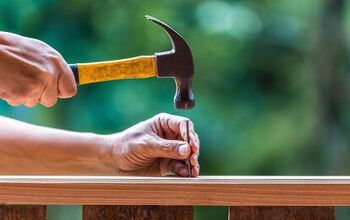What Are The Parts of a Piano? (with Diagram)

Pianos are similar to most other instruments in that they were designed to create beautiful sounds to please our ears. They have been a staple in musical artistry since their creation in the early 1700s by Bartolomeo Cristofori. Since then, pianos have come a long way in terms of intricacy, and technical conditions. Regardless, the basic premise has remained the same.
Throughout history, the shape and structure of the piano has also remained very similar. Whether it’s a polished concert grand or a shabby upright, every acoustic piano shares certain characteristics with most other types of piano. With the exception of electric keyboards and particular styles, the standard keyboard, keys, pedals, housing and lid, strings, hammers, and damper are the most common parts of a piano.
If you enjoy music or simply love to play, having a piano in your home can be music to both the ears and the eyes. You can have your piano serve as a central point in your living room or tuck it away in the corner to create a warm, cozy space. Whichever way you decide to incorporate your piano into your home design, it’s always helpful to be aware of the various parts of a piano.
Parts of a Piano
The basic function of a piano is that once a key is pressed, the hammer inside of the instrument strikes the strings from below. This alone, however, only produces a soft sound. One side of the strings is supported by bridges, connected to the soundboard. Once the strings start to vibrate, this vibration is transmitted to the soundboard via the bridges. As a result, a loud sound is produced from the soundboard vibrating the air. Put simply, the entire piano, particularly the soundboard, vibrates to create sound.
When it comes to the parts of a piano, the standard grand could have upwards of 12,000 components in all. However, whether it’s an upright or grand piano, they will all have the same five basic parts:
- Keyboard
- Housing and Lid
- Pedals
- Hammers and Strings
- Damper
1. Keyboard
The most notable part, and what makes a piano a piano, is the keyboard. This is the area of the piano where most of the interaction between the pianist and the instrument occurs. Acoustic pianos consist of 88 black and white keys in total. 36 of these keys are visibly shorter than the others, are black, and are often referred to as “sharps, “flats,” or “enharmonics.”
The remaining 53 keys are white and are called “naturals. They are situated at varying positions and are connected to the internal mechanisms within the piano case. In short, the keys are what are pressed, tapped, or pounded to produce that famous piano sound. Each key produces a different tone by shifting the “hammer,” which results in the striking of a “string.”
2. Housing and Lid
This part is the piano’s largest component. The housing, or case, and the lid are what house the sum total of the instrument. Depending on the style of the piano, whether it has the rectangular shape of a vertical or has the curves of a grand, the housing can come in different shapes and sizes.
For instance, grand pianos are generally larger and have a lid that can be opened to allow for a clearer, reverberating tone to radiate from the exposed strings. On the other hand, upright pianos are often more compact, and although they also have a lid, opening it does little for the total resonance. In fact, simply moving the piano away from a wall can do the trick!
All of the parts of the piano, the housing included, are held in place by the frame, constructed of wooden beams. On an upright piano, the frame is attached to the case itself whereas, on a grand, the frame is attached to the rim.
3. Pedals
In most cases, pedals come in sets of two or three, depending on the style of the piano. By pressing down on the respective pedal, you can make the notes sound softer or longer. Pedals are found at the base of the piano, where the user’s feet would be located while playing. From left to right, they are known as the soft (una corda) pedal, the “sostenuto” pedal, and the sustaining (damper) pedal.
All upright pianos have at least a soft and sustaining pedal, while some come with the third pedal. The third pedal on an upright is placed in the middle and is known as the practice pedal. It allows you to mute the volume of the sound by up to fifty percent and can usually be locked in position so the player does not have to hold it down constantly.
On grand pianos, the third pedal is the sostenuto pedal, which will maintain only notes that were help prior to and while the pedal is pushed down. This pedal can be very helpful and serve as a “third hand” for a particularly proficient piano player. Each pedal plays a vital role in generating, sustaining, or ending particular musical notes while playing the piano.
4. Hammers and Strings
Along with the keys, the hammers and strings are what actually produce the sound out of a piano. Located inside of the housing and under the lid, the hammers and strings are where all the musical magic takes place.
The keys on a piano are connected to small felt-covered hammers and when pressed, they act as a fulcrum. They pivot the hammer into a striking motion that impacts the strings. Each individual string is tuned and tightened to produce a specific sound, or musical note.
When you press a key on the keyboard, the hammer hits a string, or set of strings, and vibrates extremely fast. You hearing music is your ears picking up on the vibrations of the strings inside the piano. This entire process occurs in just moments.
5. Damper
Once you release a key, there must be something to stop the strings from vibrating. This is where the damper comes in. It rests above the strings inside of the keyboard and catches the string to halt vibration and prevent the sounds from bleeding together. Usually made from a soft cloth or felt material, the damper effectively helps to mute the strings by halting any vibration that could cause unwanted or unnecessary noise after a key has been released.
The damper only activates after a key that has been pressed is released, unless the user is continuously using the pedals underneath the keyboard. Holding down a pedal at the same time as your release a key does not initiate the damper to mute the strings.
Anatomy of an Upright Piano
Vertical, or upright, pianos get their name from the fact that the strings and frame are positioned vertically, perpendicular to the keyboard. They take up less floor space than the standard grand piano. The first upright pianos ever manufactured were designed like a grand piano set on its end. While a standard upright piano can be comprised of thousands of individual parts, the most common ones include:
- Cover/Lid: When not in use, the lid can be folded down to protect the keys.
- Bass Bridge: Filters the sound from the vibrating string into the body of the bass.
- Cast Iron Plate: Helps withstand the immense tension of the strings.
- Soundboard: Also referred to as the belly, the soundboard is the large diaphragm of the piano, made of wood.
- Treble Bridge: Long wooden pieces that span the length of the soundboard to help guide the strings during vibration.
- Tuning Pins: Steel pegs, generally around 1 ½ inch long, that are positioned where each string is wound.
- Tuning Strings: A piece of wire that begins at one tuning pin, is wound around a hitch pin and then returns to where it began.
An upright piano also features all of the five components notated above. Depending on the style of the piano, wheels may be installed for easy transport and the legs provide the foundation while also adding beauty to the instrument.
Anatomy of a Grand Piano
Grand pianos are the largest types of pianos on the market and often the most expensive. However, they offer a substantial dynamic range, distinct tonality, rich resonance, and responsive touch. For these reasons and more, grand pianos are often the choice for professional musicians.
Just like upright pianos, grand pianos contain the same basic five aforementioned components. However, they retain the same shape as the original pianoforte in which the strings are strung horizontally, allowing more potential for artistic expression.
Additional parts of a grand piano include:
- Hammer Rail: The area where the hammers sit inside the piano.
- Pressure Bar: Prevents the strings from slipping sideways and keeps them positioned against the v-bar.
- Pin Block: Also referred to as a wrest-plank. The pin block is a large piece of hardwood that is used to anchor the tuning pins.
- Soft Pedal: The pedal most often used in post-classical music to produce melodramatic tones.
- Muffler Pedal: Located in the middle, this pedal is the rarest of the three.
- Damper Pedal: This pedal is the most often used and its primary function is to perform most passages.
Again, the above are just some of the over 10,000 parts of a piano and are most of the components that you should become relatively familiar with, especially if you are a pianist.

Jessica considers herself a home improvement and design enthusiast. She grew up surrounded by constant home improvement projects and owes most of what she knows to helping her dad renovate her childhood home. Being a Los Angeles resident, Jessica spends a lot of her time looking for her next DIY project and sharing her love for home design.
More by Jessica Stone





























